Microsoft recently made Windows 10 an optional update. In other words, you might get the prompt on your computer to upgrade to Windows 10 in the near future. Even better, if you visit the Windows Update website and check for updates, you'll see that you can easily give up your spot in line. To avoid all this, and to learn how to downgrade from Windows 10 to Windows 7 in one easy step, keep reading!
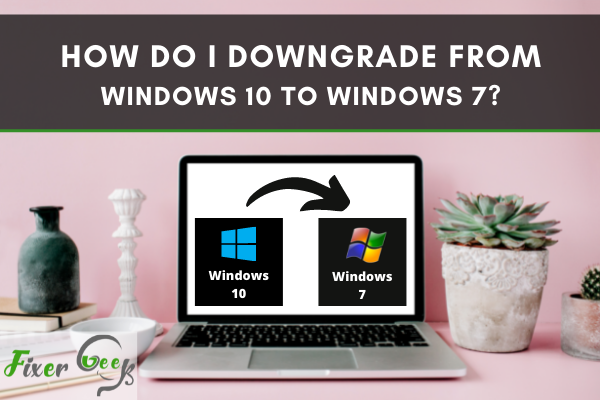
Are you thinking of downgrading from Windows 10 to Windows 7? This article has the solution for you!
However, before downgrading from Windows 10 to Windows 7, please be aware that Microsoft has stopped support for Windows 7 as of January 14, 2020. So you will no longer get updates or tec.
technical support to help you protect your computer.
Methods on How to Downgrade from Windows 10 to Windows 7
Before you proceed, keep in mind that you may need to backup important files on your computer. Besides this, you may have to reinstall some software and apps and hardware drivers compatible with Windows 7 after the rollback. If you upgraded to Windows 10 less than 10 days ago, proceed to Method 1 below, or jump to Method 2.
Method #1
Did you upgrade to Windows 10 in the last 10 days?
If you upgraded to Windows 10 in the last 10 days, you might be able to downgrade to Windows 7 easily, without harming the files on your computer. Microsoft gives you a 10-day limit to roll back to a previous version of your operating system. Of course, you will lose apps and software you had installed after installing Windows 10, and you may lose files you created while using Windows 10.
To go back to Windows 7, follow these steps:
- Select Start and then Settings. You can even press Windows+I to get to settings. You should see the following:
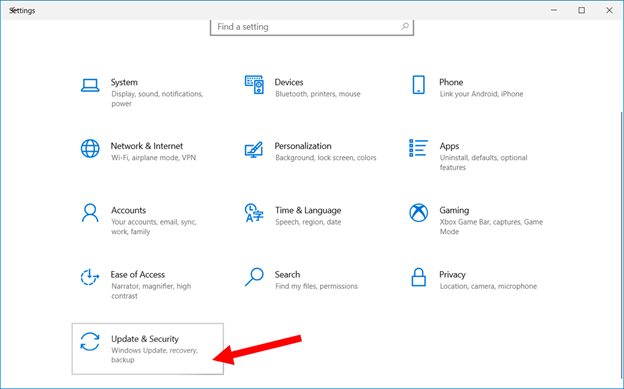
- Select Update & Security. If you see the following screen, you will be able to downgrade to Windows 7 fairly easily.
- Click on the Get started button to start the downgrade.
- Select a reason and click Next.
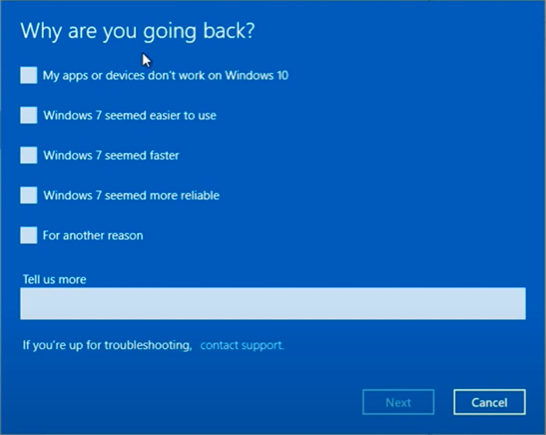
- Once again, you are asked if you want to continue using Windows 10. If you still want to downgrade, select No, thanks.
- This tells you the rollback will take some time. Also, it asks if you backed up important data files, just in case. And it tells you that some programs may need to be reinstalled after the rollback. If you are ready, click Next to continue.
- You are warned that if you had a password to sign in to Windows 7, you need to remember it. If not, you may have to do a clean install of Windows 7, as explained below. If you know the password, click Next.
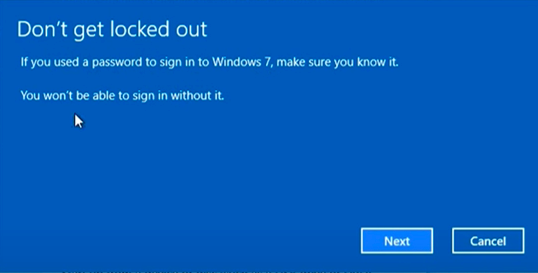
- Click Go back to Windows 7 to continue. Your computer should restart. Depending on your configuration, this may take some time, so make sure your computer remains plugged in and left on.
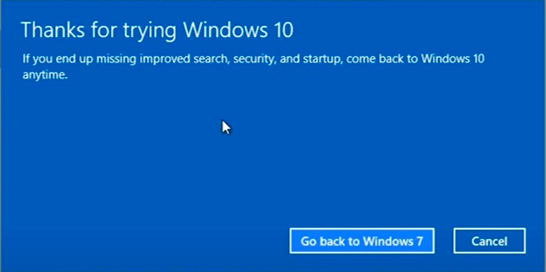
This should roll back to Windows 7. Be warned again, Microsoft does not support Windows 7 anymore.
Method #2
Has it been more than 10 days since you upgraded to Windows 10? Or did you buy a computer with Windows 10 pre-installed?
In case you upgraded to Windows 10 more than 10 days ago, or in case your computer came with Windows 10 pre-installed, you may need to do a clean install. If you upgraded from Windows 7, you might have your copy of Windows 7. Even if you do not have your copy or have misplaced it, there is still a workaround.
Before you go ahead, make sure to backup all your important files. When you do a clean install, your disk may get formatted, and you could lose all your files if you have not backed them up. Once you have backed your data, proceed.
a). If you have your copy of Windows 7
Restart your computer with your copy of the Windows 7 disc and follow the instructions.
b). If you do not have a copy of Windows 7
You may have misplaced your copy of Windows. No panic. Microsoft allows you to download legal copies of Windows 7 Disc Images (ISO files), which you can burn onto a DVD or store on a USB for use to install Windows 7.
However, you will need a Product Activation Key to activate your copy of Windows 7. If you have your old activation key, you can use it. However, if you do not have one, you may have to buy one. Please do not buy from spurious or dubious sites as they will cause problems for you.
Take note that if you bought your computer with Windows 7 pre-installed, there might be a partition on your hard disc that will enable you to recover or reinstall Windows 7.
Final Words
Downgrading from Windows 10 is not that complicated. However, make sure to do it properly and take necessary precaution to avoid issues with your data.
Summary: Do I downgrade from Windows 10 to Windows 7
- Before you begin, back up all of your files and settings.
- Next, go to Microsoft's “Windows 10 free upgrade for customers who use assistive technologies” webpage.
- Choose the 32-bit (x86) or 64-bit version, depending on your system architecture.
- Enter your Windows 7, Windows 8 or Windows 8.1 product key.
- Now download the tool. You can also find it at the Microsoft Software Download page by searching for "Windows 10" in the search box toward the top of the page.
- it will likely take several hours to complete.
- Afterward, you can reinstall your apps, restore your files and settings from backup, and so forth -- just as you would with any other major Windows upgrade.
- That should do it! You've downgraded successfully (and hopefully without incident). Enjoy your new Windows 7 system!